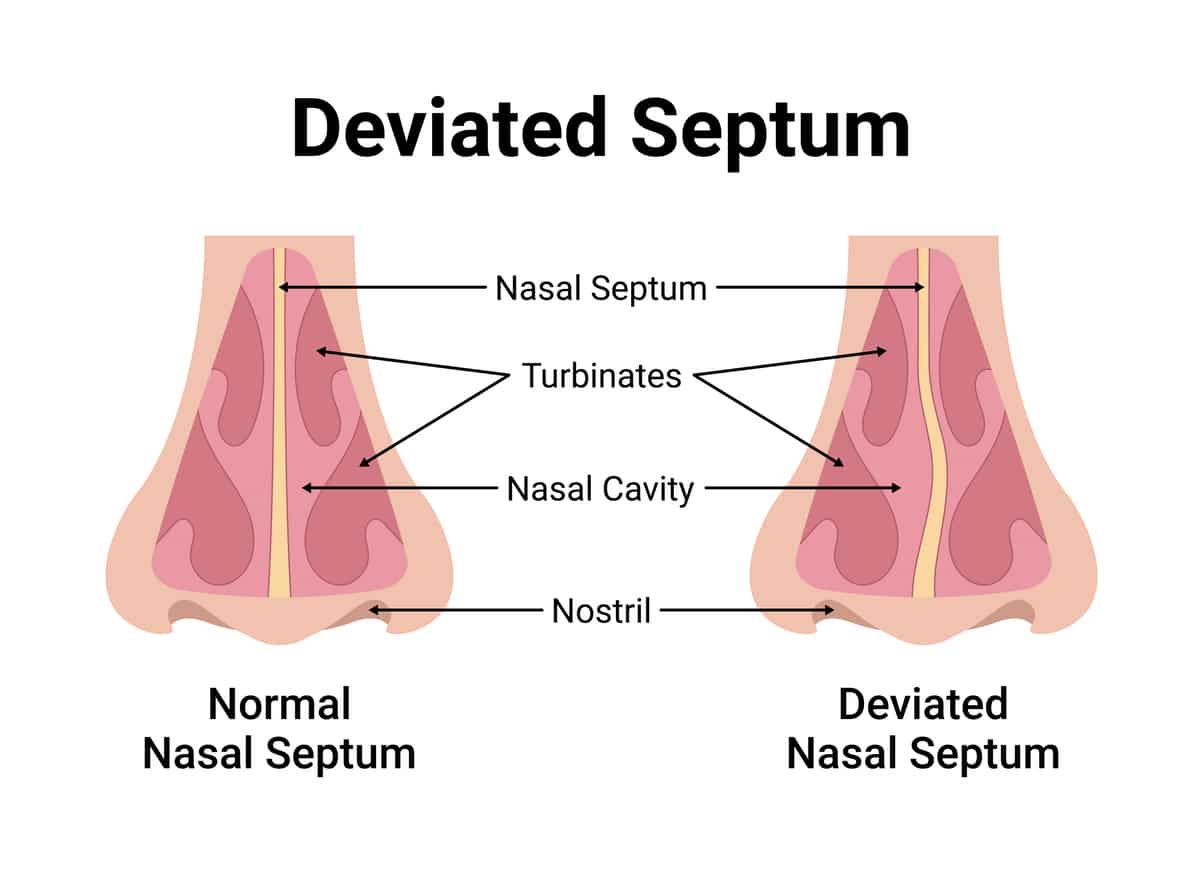A deviated septum refers to a misalignment of the cartilage and bone separating your nasal cavity. While a slightly off-centered septum is unlikely to cause symptoms, a more pronounced deviation can cause breathing problems, congestion, headaches, snoring, and frequent sinus infections.
One effective method for deviated septum correction is septoplasty.
What Is Septoplasty?

Septoplasty is a minimally invasive septum surgery that straightens the wall of bone and cartilage, dividing the space between your nostrils.
What Can I Expect from Septoplasty?
Septoplasty is usually performed as an outpatient procedure, meaning you can go home the day of the surgery. Your ENT expert will use general (where you’re completely asleep) or local (only your nose is numbed) anesthesia, depending on the complexity of your procedure. Septoplasty usually takes between 30 and 90 minutes and involves the following steps:
- The surgeon makes an incision on one side of your nose
- The surgeon lifts the mucosa, a thin membrane covering the septum, to expose it
- The surgeon reshapes the septum’s bone and cartilage to straighten the misalignment. This may involve removing parts of the bone and cartilage.
- The surgeon reshapes and repositions the underlying structures
- The surgeon repositions the mucosa over the septum and places splints or soft packing inside the nose to hold the tissue in place
Splints usually stay in for about one week. If your surgeon uses dissolving stitches, they’ll disappear on their own.
What Is Septoplasty Recovery Like?
Following a septoplasty, your ENT expert will give you a set of instructions to help you manage pain, bleeding and swelling. These may include one or more of the following:
- Sleep on your back
- Elevate your head while sleeping
- Avoid strenuous activities like exercise or heavy lifting
- Don’t wear clothing you have to pull over your head (t-shirts, sweaters, etc.)
About three to six months after the surgery, the tissues and cartilage in your nose should be relatively stable, though it is still possible for them to shift or change shape. Your nose will likely fully finish healing after about six months to one year.
What Are the Benefits of Septoplasty?
Septoplasty is one of the most common ENT procedures. Comprehensive reviews found that long-term outcomes demonstrate an improvement in deviation-related nasal obstruction symptoms (congestion, trouble breathing, etc.). Some patients find that their nasal obstruction symptoms reoccur following a septoplasty. If this is the case, your ENT expert may recommend a second septoplasty or other medical treatment to manage the underlying cause of your nasal obstruction.
Schedule an ENT Appointment
If you’re ready to experience the better breathing a septoplasty can offer, call the experts at Midwest Ear, Nose & Throat Specialists to see if the procedure is right for you.
